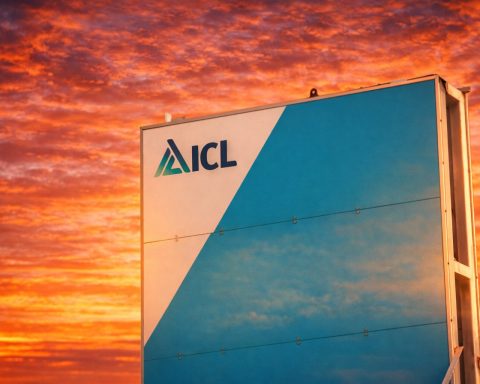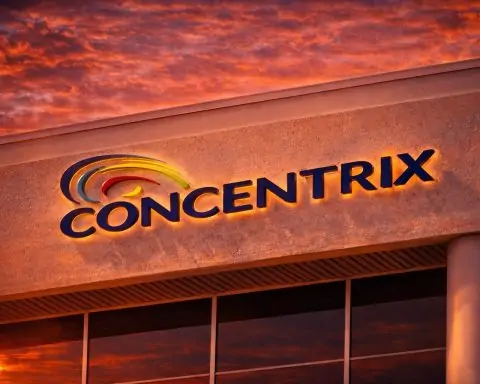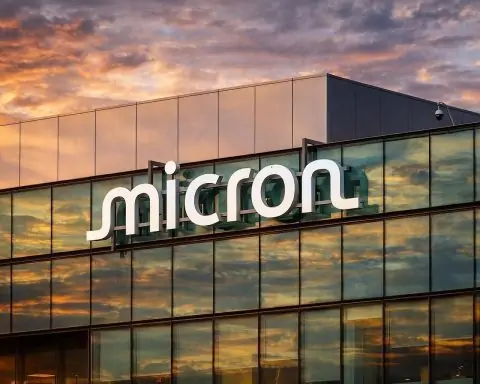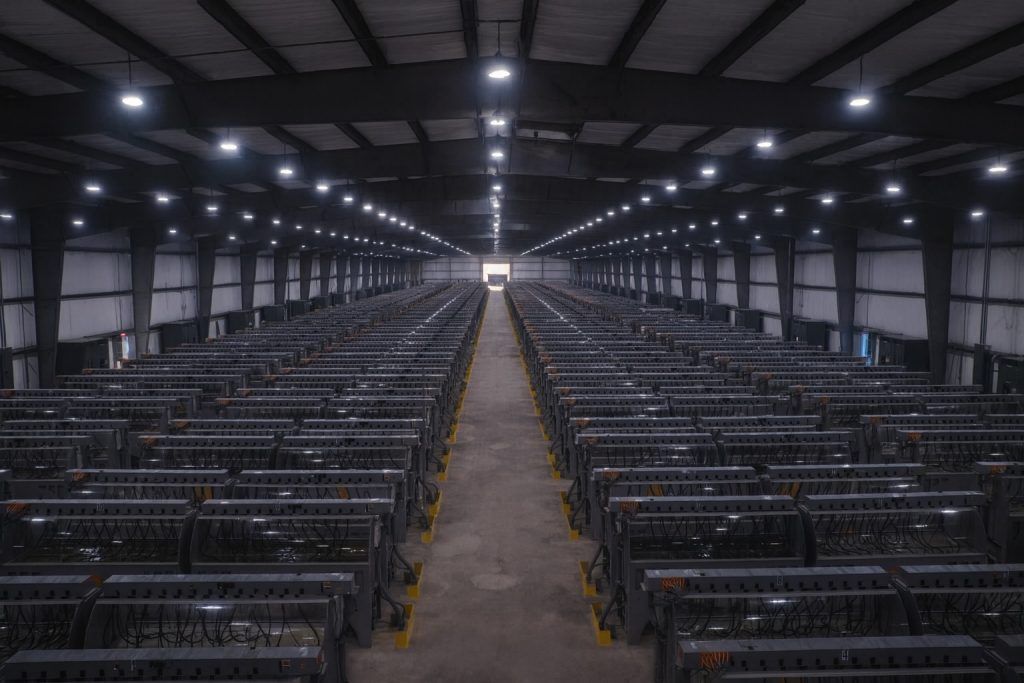- CLSK stock price surges: CleanSpark (NASDAQ: CLSK) closed at $19.37 on Oct. 24, 2025, up nearly +9.6% that day [1]. Shares hit a new 52-week high of $23.61 in mid-October amid a crypto rally [2], more than doubling in value year-to-date.
- Volatile week of swings: The past week saw huge price swings – CLSK plunged -10.2% on Wednesday (Oct. 22) to $16.86 [3] as Bitcoin briefly pulled back to ~$107K [4], then rebounded +4.8% Thursday and another +9.6% Friday to end the week on a high note.
- Bitcoin rally lifts miners: Bitcoin’s price soared to all-time highs around $110K–$120K in October [5], greatly boosting mining stocks. CleanSpark holds over 13,000 BTC in its treasury [6] – a windfall now worth ~$1.4 billion at those prices, which helped drive CLSK’s market cap above $5.5 billion during the peak.
- Bold AI pivot announced: On Oct. 20, CleanSpark unveiled plans to expand beyond Bitcoin mining into AI data centers, hiring industry veteran Jeffrey Thomas to lead a new AI/HPC division. The news sent CLSK shares jumping ~12–13% intraday (about +9% by close) as investors cheered the diversification move [7] [8].
- Strategic growth funding: The company secured $400 million in bitcoin-backed credit lines in late September (two $200M facilities with Coinbase and Two Prime) to fund expansion without issuing new stock [9]. Executives highlight this “borrow against Bitcoin, don’t sell it” strategy as key to accelerating growth while avoiding shareholder dilution [10].
- Strong financial results: CleanSpark’s core business is booming. In fiscal Q3 2025, revenue jumped 90.8% year-over-year to $198.6 million (beating estimates) and the company earned $0.78 per share profit – crushing the $0.07 EPS expected [11]. The firm also hit record Bitcoin mining metrics, producing 629 BTC in September and reaching 50 EH/s hashrate capacity [12].
- Analysts mostly bullish:9 out of 10 Wall Street analysts rate CLSK a “Buy” or Outperform [13]. Several raised their price targets after the AI announcement – e.g. Needham to $23 and BTIG to $26 – seeing further upside in CleanSpark’s expanding infrastructure plans [14]. A lone cautious voice, J.P. Morgan, downgraded to Neutral with a $14 target, citing valuation worries after the stock’s huge run [15].
Latest Stock Price & Recent Performance
CleanSpark’s stock is coming off an exceptionally volatile week of trading. As of the last close on Friday, October 24, CLSK stood at $19.37 per share [16]. That price represents a sharp rebound from mid-week lows – on Wednesday, the stock tumbled 10.18% to $16.86 [17] amid a broad risk-off move in crypto. Investors “trimmed exposure” that day due to renewed U.S.-China geopolitical tensions and a dip in Bitcoin to the $107K level [18]. However, sentiment quickly reversed: CleanSpark bounced +4.8% Thursday and surged nearly +9.6% on Friday [19]. By week’s end, shares were roughly back to where they started the week – showcasing the high volatility of crypto mining stocks that often swing double-digits on news.
Despite the choppiness, CleanSpark has delivered outstanding returns in 2025. The stock has more than doubled year-to-date, up about 118% since January [20]. In fact, CLSK reached a 52-week high of $23.61 on October 15 [21] after a string of positive catalysts (discussed below). Even after pulling back from that peak, CleanSpark is still up over 100% in the past month alone [22]. Such momentum far outpaces the broader market – by comparison, the S&P 500 is only modestly higher on the year. CleanSpark’s outsized gains underscore how tightly the stock is levered to the crypto cycle and company-specific developments.
To put recent moves in perspective, here is a snapshot of CLSK’s closing prices over the past week:
| Date (2025) | Closing Price | Daily Change |
|---|---|---|
| Oct 24 (Fri) | $19.37 | +9.59% 📈 [23] |
| Oct 23 (Thu) | $17.67 | +4.80% [24] |
| Oct 22 (Wed) | $16.86 | –10.18% 📉 [25] |
| Oct 21 (Tue) | $18.77 | –7.99% [26] |
| Oct 20 (Mon) | $20.40 | +4.48% [27] |
As shown, CleanSpark saw two sessions of nearly 8–10% drops followed by a sharp two-day rally. These swings coincided with Bitcoin’s own fluctuations and macro news, illustrating how CleanSpark trades as a high-beta proxy for crypto markets. When Bitcoin falters or global events spark fear, CLSK can sell off hard – but when optimism returns, the stock often bounces back even more strongly. Traders have noted that CleanSpark’s trading volume spiked well above average during these moves, suggesting both institutional activity and momentum players jumping in [28]. Short-term technical indicators also reached extreme levels – for example, the stock’s RSI (Relative Strength Index) shot above 80 (overbought) during early October’s euphoria [29]. Some consolidation after such a rapid run isn’t surprising. Overall, volatility remains elevated, and investors should expect continued swings in the stock price in tandem with Bitcoin’s gyrations.
Bitcoin Rally Powers CleanSpark’s Surge
One of the biggest tailwinds behind CleanSpark’s recent performance is the remarkable rally in Bitcoin this year. In recent weeks, Bitcoin broke above its previous all-time high, trading north of $110,000 per coin in mid-October and even briefly topping $120,000 [30]. This “Uptober” crypto surge has been a game-changer for mining companies. Higher Bitcoin prices directly boost miners’ profitability – every BTC mined is suddenly more valuable – and they also inflate the value of any bitcoins miners hold on their balance sheets. CleanSpark has benefited on both fronts.
Notably, CleanSpark has been accumulating a large Bitcoin treasury rather than selling all its mined coins. As of September 30, the company held over 13,000 BTC in reserve [31]. At October’s peak prices (~$110K+ per BTC), that hoard was worth roughly $1.4 billion on paper [32] – an enormous asset for a company of CleanSpark’s size. This contributed to CLSK’s market capitalization swelling above $5.5 billion during the rally [33], as investors priced in the “goldmine” value of its bitcoin holdings. CleanSpark’s production is also at record levels: the firm mined 629 BTC in September alone [34], thanks to major expansions in its mining capacity (now 50 EH/s, one of the largest in North America) [35]. In short, the surging price of Bitcoin has supercharged CleanSpark’s revenues and assets, creating a positive feedback loop for the stock.
Broader industry sentiment has been extremely bullish as well. Crypto miners across the board have seen their stocks climb in tandem with Bitcoin. Peers like Marathon Digital (MARA) and Riot Platforms (RIOT) notched multi-month highs this month, and exchange-related stocks also rallied. There is a sense of FOMO in the air, with analysts talking of a possible extended “crypto supercycle” into 2025. Key upcoming events – such as the Bitcoin “halving” in 2024 (which will cut miners’ block rewards in half) and the potential approval of a U.S. spot Bitcoin ETF – are feeding speculation that Bitcoin’s upside could continue [36]. Crypto mining equities like CleanSpark tend to act as leveraged plays on Bitcoin, often rising or falling by an even greater percentage. This has certainly been evident in 2025: CLSK’s ~118% YTD gain far exceeds Bitcoin’s own roughly 90% year-to-date climb [37]. CleanSpark’s outsized move reflects not only Bitcoin’s strength but also company-specific catalysts – most prominently, its new strategic pivot.
AI Expansion News Sends Shares Soaring
CleanSpark made headlines on October 20, 2025 by announcing a bold expansion beyond its core business of Bitcoin mining. The Nevada-based company revealed plans to build and operate AI and high-performance computing (HPC) data centers – effectively diversifying into providing computing power for artificial intelligence applications. As part of this strategic pivot, CleanSpark hired Jeffrey Thomas as the new Senior Vice President of AI Data Centers [38]. Thomas is a seasoned industry veteran with over 40 years of experience; notably, he previously oversaw a multi-billion-dollar AI data center project in Saudi Arabia, forging partnerships with major tech firms [39]. His appointment was intended to signal that CleanSpark is serious about executing on the AI strategy, bringing in leadership with deep expertise in large-scale digital infrastructure.
The market’s reaction to this news was extremely positive. On Oct. 20, CLSK stock jumped about 12–14% intraday on heavy volume, making it one of the top gainers on the NASDAQ that day [40]. It eventually closed with roughly a +9% gain on Oct. 20, near its highest levels of the year. Investors clearly cheered the company’s diversification move. By leveraging its extensive energy and data center infrastructure to serve the booming AI industry, CleanSpark aims to create new revenue streams insulated from Bitcoin’s notorious volatility [41]. “The expansion is designed to offer critical computing services to the burgeoning AI sector and establish diversified revenue independent of Bitcoin’s volatile price cycles,” CleanSpark CEO Matt Schultz explained, calling it a strategic leap to strengthen long-term cash flows [42]. In other words, the company is pivoting into a high-growth tech sector (AI) to complement its crypto mining operations, with the goal of smoothing out the earnings rollercoaster that comes with being tied solely to Bitcoin.
Concrete steps are already being taken to support this initiative. CleanSpark has secured additional power capacity and real estate in Georgia – a key region for its new AI facilities – including contracts in the College Park area to develop large-scale “giga-campus” data centers [43]. This hints that the move from concept to construction is underway on the ground. The company’s plan is to repurpose and expand its existing data center infrastructure (initially built for mining) to handle AI and HPC workloads for external clients. Industry observers have noted that crypto miners are increasingly embracing similar shifts. “Markets are rapidly repricing companies shifting focus toward powering the next generation of compute,” CoinDesk noted of this trend [44]. With vast energy contracts, cooling systems, and technical know-how from running mining farms, companies like CleanSpark see an opportunity to “join the AI rush” by offering their infrastructure for cloud computing and machine learning tasks [45]. In CleanSpark’s case, the ~12% stock pop on its AI announcement demonstrates how enthusiastically investors are rewarding even the early stages of such pivots [46].
It’s worth mentioning that CleanSpark is not alone – other mining firms are also pivoting to AI/HPC. For example, Marathon, Hut 8, Bitdeer, Iris Energy and others have announced similar forays into hosting or providing computing for AI [47] [48]. The trend reflects a broader industry acknowledgement that the line between crypto mining datacenters and general-purpose computing centers is blurring. Still, CleanSpark’s initiative stands out because of the scale of its move and the fact that it’s among the first U.S.-listed miners to so publicly reposition itself. The successful execution of this strategy could potentially re-rate CleanSpark’s stock in the eyes of investors from a pure “Bitcoin miner” valuation to something more like a hybrid tech infrastructure provider. Such a transition, if successful, might command higher valuation multiples long-term (tech/cloud companies typically get premium earnings multiples compared to mining firms) [49] [50]. This is part of the “what’s next?” excitement investors see – CleanSpark is effectively trying to transform its business model in a way that could pay dividends well beyond the current crypto cycle.
Scaling Up: Growth, Acquisitions and Balance Sheet Strength
Even as CleanSpark ventures into new arenas, it continues to shore up its core Bitcoin mining operations and overall financial strength. 2025 has been a year of aggressive expansion for the company. Earlier in the year, CleanSpark acquired significant new facilities – most notably the assets of GRIID Infrastructure – which added multiple best-in-class mining sites and a development pipeline in the U.S. Southeast (including a major Tennessee site powered by the TVA) [51]. These acquisitions helped CleanSpark boost its mining capacity to the record 50 EH/s level reached by mid-2025, reportedly making it the first publicly traded miner to hit that mark with fully self-operated centers [52]. The company touts that it has grown to this scale while maintaining efficiency; in September, CleanSpark reported a 26% year-on-year improvement in fleet energy efficiency alongside its production growth [53].
On the financial front, CleanSpark has taken innovative steps to fund its expansion while minimizing shareholder dilution. In late September, the company announced a pair of large bitcoin-backed credit facilities – essentially loans collateralized by its BTC treasury. The first $100M facility with Coinbase Prime was unveiled on Sept. 22 (sparking about a 6% jump in CLSK’s stock that day) [54], and a second $100M deal with lender Two Prime followed on Sept. 25. In total, CleanSpark now has $400 million of borrowing capacity through these arrangements [55]. This gives the company “ample dry powder for growth without diluting shareholders,” as management noted [56]. Rather than issuing new equity or selling off its valuable Bitcoin holdings, CleanSpark is leveraging its BTC as collateral to raise cash. CFO Gary Vecchiarelli highlighted that they have “effectively utilized nearly 13,000 bitcoin” from the treasury to secure funds, calling the non-dilutive financing approach core to accelerating CleanSpark’s data center growth while “protecting shareholder value.” [57] This strategy essentially lets CleanSpark benefit from Bitcoin’s price appreciation while still funding expansion, a creative balance that has drawn praise from many analysts [58].
Importantly, CleanSpark’s operational performance and financial results have markedly improved, adding fundamental support to the stock’s rally. In its most recent reported quarter (fiscal Q3 2025, covering April–June), the company delivered record revenue of $198.6 million, up 91% from the same quarter a year prior [59]. It also swung to a strong profit – earning $0.78 per share (versus just $0.07 expected by analysts) [60]. For context, CleanSpark’s full-year revenue in 2024 was around $162 million [61], so the quarterly figure underscores how rapidly the mining business scaled alongside Bitcoin’s rise. Net income in Q3 reached roughly $257 million [62], aided by high margins (gross margin was about 54% per the earnings call) and possibly some one-time gains (such as the increased value of held bitcoins). Regardless, the results demonstrate robust cash generation in the current climate. CleanSpark’s leadership noted that September capped off a “monumental” fiscal year, with the company now positioned to “thrive at the intersection of energy, Bitcoin, and compute.” [63] Going forward, CleanSpark plans to continue reinvesting in growth – expanding both its Bitcoin mining fleet and now its AI data center capacity – while using debt strategically and avoiding excessive equity dilution. The balance sheet flexibility (enhanced by the new credit lines and a prior $0% interest convertible note deal in late 2024) gives management confidence it can pursue aggressive expansion “with the team, expertise, and assets to thrive” in this next chapter [64] [65].
Analyst Sentiment and Price Targets
Wall Street analysts have, for the most part, applauded CleanSpark’s trajectory this year. According to recent data, 9 out of 10 analysts covering CLSK maintain a “Buy” or equivalent positive rating [66]. The consensus 12-month price target is in the low-$20s (around ~$21.5) [67], roughly in line with the current stock price after its October run-up. However, many firms have updated their outlooks upward as CleanSpark’s prospects have evolved:
- Needham & Co. raised its target from $21 to $23 (Buy rating) in light of the company’s expanding infrastructure and the AI diversification, noting these moves bolster long-term growth potential [68].
- BTIG likewise hiked its target to $26 and reiterated a Buy, citing CleanSpark’s improved outlook after the AI initiative and the strong execution in scaling mining operations [69].
- Cantor Fitzgerald and H.C. Wainwright have been among the most bullish, with some of the Street’s highest targets in the mid-$20s (reports indicate they envision the stock in the $25–$27 range) [70] if favorable trends continue.
These optimistic targets imply significant potential upside (on the order of +30–50% from recent mid-teen levels at the time those targets were set). Bulls argue that if Bitcoin stays elevated and CleanSpark successfully launches its AI data center services, the market will further revalue the company as a diversified crypto/tech play. “Analysts remain optimistic [on CleanSpark] despite insider selling news,” noted a TipRanks market report in October, pointing out that even as some company insiders took profit on the stock’s rally, professional analysts have largely reiterated their Buy ratings [71]. The consensus is that CleanSpark’s strategy – especially holding mined Bitcoin and borrowing against it rather than diluting shareholders – is a savvy approach to maximize shareholder value in a crypto bull cycle [72].
That said, not everyone is pounding the table unabashedly. In late September, J.P. Morgan made waves by downgrading CLSK to Neutral from Overweight, assigning a much lower $14 price target [73]. JP Morgan’s analyst cautioned that after the stock’s huge rally, valuation looked stretched relative to execution risks [74]. Essentially, this view worries that CleanSpark’s market cap (which topped $5B during October) may already price in a lot of future success. Any stumble – be it a pullback in Bitcoin prices, delays in the AI buildout, or other issues – could trigger a sharp correction from these levels. No other major firm currently has a Sell rating on CleanSpark (the latest tally was 0 Sells, 1 Hold, 9 Buys) [75], but JP Morgan’s cautious stance underscores that risks do exist. As one financial commentator put it, “CleanSpark’s niche can be a double-edged sword” – on one hand it enjoys a diversified model and smart use of debt, “on the other hand it faces all the cyclical risks of crypto plus the execution demands of energy projects.” [76] In sum, while the prevailing sentiment is bullish, expectations are high, and the company will need to deliver on ambitious plans to justify its valuation. Most analysts appear confident but will be monitoring upcoming results closely to ensure the growth narrative stays on track.
(Analyst Ratings Snapshot – October 2025)
| Firm | Rating | Target Price |
|---|---|---|
| Needham & Co. | Buy | $23 (raised from $21) [77] |
| BTIG | Buy | $26 (post-AI pivot) [78] |
| Cantor Fitzgerald | Overweight/Buy | ~$25–$27 (high-end range) [79] |
| J.P. Morgan | Neutral (Hold) | $14 (valuation caution) [80] |
| Consensus (9 analysts) | Strong Buy (90% Buy) | ~$21.5 12-mo avg. [81] |
Challenges, Risks and Broader Outlook
Looking ahead, CleanSpark finds itself at the crossroads of two dynamic industries – cryptocurrency mining and AI computing – each with its own opportunities and challenges. In the short term, the biggest driver (and wildcard) for CLSK remains the price of Bitcoin. As discussed, if Bitcoin continues its uptrend or pushes to new highs, it will likely lift CleanSpark’s stock further, often in amplified fashion [82]. The upcoming 2024 Bitcoin halving and the prospect of a spot ETF approval are potential bullish catalysts on the horizon that could keep sentiment strong into 2026 [83]. Conversely, any significant pullback in Bitcoin could quickly hit CleanSpark’s financials and share price. Mining profits can shrink rapidly if BTC prices drop while energy costs stay fixed, squeezing margins [84]. CleanSpark does have relatively efficient operations – thanks to economies of scale and use of low-cost/renewable energy, its cost to mine each Bitcoin is lower than many peers, providing a cushion [85]. But it is not immune: a sharp downturn in crypto markets would likely see CLSK decline in sympathy. Volatility is the price of admission in this sector. After the steep rally, traders note that profit-taking and consolidation are healthy – as evidenced by the mid-week dip in late October. The stock became technically overbought after its run (RSI > 80) [86], so a period of choppy trading or even a modest correction would be normal if Bitcoin pauses around the $110K level [87].
Another near-term focus for investors is how quickly CleanSpark can show tangible progress on its AI data center venture. Thus far, the company has announced the initiative, made a key hire, and indicated where it plans to build (Georgia). The next steps might include signing up anchor clients for its AI/HPC services, breaking ground on new facilities, or disclosing initial revenue contributions from this segment. Any concrete news that the AI strategy is moving “from concept to reality” could provide an independent catalyst for the stock, separate from Bitcoin’s swings [88]. On the flip side, if months go by with little detail or if the AI project faces delays, the market’s patience could wane. Some level of AI success is arguably already baked into the stock price after the recent jump, so CleanSpark will be under pressure to execute. In summary, the short-term outlook for CLSK is optimistic but fragile – the stock is buoyed by crypto market strength and excitement over AI, yet vulnerable to the inherent swings and headline risks of both arenas [89].
Zooming out to the long-term horizon, the big question is: Can CleanSpark successfully transform into a hybrid Bitcoin-and-AI infrastructure provider? If yes, the payoff could be significant. The global demand for AI computation is exploding – powering everything from cloud services to advanced research – and tech giants are hungry for more data center capacity. This gives CleanSpark a chance to tap a much larger addressable market beyond the finite realm of Bitcoin mining [90]. In a bullish scenario five years out, one could imagine CleanSpark deriving a substantial portion of revenue from leasing compute power or hosting AI workloads, while still maintaining a strong crypto mining arm. That kind of diversified model could make it a more resilient business across different cycles [91]. Investors might then value CleanSpark more like a tech infrastructure stock (with higher multiples) instead of a pure volatile miner.
However, execution challenges abound on this path. Moving into AI services pits CleanSpark against heavyweight competitors and well-entrenched incumbents. Cloud giants like Amazon AWS, Google, and Microsoft Azure are investing tens of billions in AI data centers, as are specialized firms like CoreWeave (itself a former crypto miner now focused on AI) [92]. CleanSpark will need to carve out a competitive edge – perhaps by focusing on certain niches or leveraging its low-cost energy infrastructure – to win business in this crowded field [93]. The company will also have to develop new capabilities, from sourcing specialized hardware (GPUs, AI chips) to providing the software support and reliability that enterprise AI clients demand [94]. This is a very different customer base than crypto mining, implying a steep learning curve in marketing to and servicing large organizations or research institutions for HPC needs [95]. In short, becoming a player in AI data centers is far from guaranteed success – it will likely take significant time, investment, and operational excellence.
The broader industry context suggests that CleanSpark is at the forefront of an emerging trend where crypto miners rebrand as “digital infrastructure” companies [96]. For instance, Riot Blockchain literally renamed itself Riot Platforms to reflect diversification, and other miners like Applied Digital have shifted focus to data center services for machine learning [97]. By 2025, the line between a mining farm and a generic data center is indeed blurring – many miners realize their expertise in running power-hungry computing facilities can be repurposed for more stable, growing markets like cloud computing and AI [98]. This industry-wide pivot could eventually yield a more resilient crypto infrastructure sector that isn’t solely at the mercy of Bitcoin boom-bust cycles [99]. CleanSpark’s strategy puts it among the leaders of this paradigm shift, which could be transformative if executed well [100]. At the same time, if many players chase the AI hosting opportunity, competition will heat up and could erode the profit margins that miners hope for. The race is on to secure clients and scale capacity; those who move fastest and build reliable reputations will have an edge [101]. If the niche gets crowded, pricing for AI compute services might become competitive, tempering the lucrative expectations some have. Furthermore, CleanSpark must keep one foot firmly in the crypto world – Bitcoin mining isn’t going away and remains the company’s cash cow today. The next Bitcoin halving in 2024 will cut mining rewards in half, which historically can squeeze miners in the short term (though it also often precedes higher BTC prices later). CleanSpark’s large BTC holdings and high hashrate position it to benefit if Bitcoin’s price surges post-halving, but also to suffer if a post-halving slump occurs (as happened in some past cycles) [102]. Balancing these dual tracks – a volatile but potentially lucrative crypto operation and a nascent AI data center venture – will define CleanSpark’s long-term story. It’s an ambitious balancing act that few companies (if any) have attempted at this scale.
Finally, an ever-present factor for CleanSpark and its peers is energy – both cost and regulation. Bitcoin mining is infamously energy-intensive, which has drawn increasing scrutiny from policymakers concerned about environmental impact. In some regions, authorities have floated or enacted measures to curb high-carbon crypto mining (for example, bans or extra taxes on miners using coal-heavy power) [103] [104]. By 2025, ESG compliance has become almost a prerequisite for miners seeking large institutional investment [105]. This means companies are under pressure to use renewable energy sources, improve efficiency, and transparently report emissions. Many miners now proudly tout their use of hydro, wind, solar, or even capturing wasted natural gas – anything to show they are minimizing reliance on coal and cutting carbon footprint [106].
CleanSpark, true to its name, has positioned itself as a “clean” energy-focused miner from the start. The company actually originated in the energy tech sector (developing microgrid and renewable solutions) before pivoting to Bitcoin mining a few years ago. As a result, CleanSpark still operates an energy technology segment and has incorporated renewables into its mining facilities where possible. It has installed on-site solar panels and battery storage at some locations, partnered with utilities for access to low-carbon power, and generally sited its data centers in regions with affordable, cleaner electricity (states like Georgia and Texas, which have abundant natural gas, nuclear and renewable generation) [107]. This not only lowers its cost per Bitcoin mined – a key competitive advantage – but also bolsters CleanSpark’s ESG credentials as one of the more sustainable players in an industry often criticized for its carbon footprint [108].
If future regulations or incentives begin to favor miners with greener operations, CleanSpark could be well placed to benefit. Analysts speculate that governments might introduce efficiency standards, carbon credits, or other policies that effectively reward miners who use renewable energy (and penalize those who don’t) [109]. CleanSpark’s CEO has emphasized their focus on ESG in past communications, suggesting the company is ready for such an environment [110]. One analysis noted that if regulations favor onshore, ESG-friendly miners, CleanSpark could attract additional institutional capital that is currently hesitant about crypto’s environmental issues [111]. Moreover, as CleanSpark expands into AI data centers, energy efficiency will remain crucial – large AI computing facilities can consume as much or more power than crypto mines, potentially drawing similar scrutiny [112]. Here again, CleanSpark’s experience in optimizing power usage and integrating renewables could become a selling point not just for regulators or investors, but also for certain enterprise customers who prefer service providers with a green profile [113]. In sum, energy is both a risk and an opportunity: a risk because rising electricity prices or strict carbon rules could hurt operations, but an opportunity because CleanSpark’s focus on clean, vertically-integrated power solutions could set it apart. The company’s “infrastructure-first” model – owning its land, power contracts, and data centers – gives it control over how that infrastructure is powered and monetized [114]. As climate concerns intensify, CleanSpark’s strategy of “turning low-cost, reliable energy into money” (by producing valuable compute services, whether Bitcoin or AI) may prove prescient [115].
Conclusion
CleanSpark’s journey through 2025 has been nothing short of transformative. The company has ridden the wave of Bitcoin’s resurgence to reach new stock highs, aggressively scaled up its mining operations, and boldly entered the AI arena to secure its future beyond crypto. These moves have largely been met with enthusiasm – evident in CLSK’s sharp rally and upbeat analyst coverage – because they indicate CleanSpark is not content to remain just a Bitcoin miner tied to crypto’s ups and downs. Instead, it aspires to become a broader digital infrastructure powerhouse, straddling two of the most cutting-edge sectors of our time: cryptocurrency and artificial intelligence [116].
There are plenty of reasons for optimism. CleanSpark has shown it can execute ambitious plans (hitting record hashrates, acquiring facilities, raising capital) while maintaining financial discipline – for example, funding growth through debt and credit facilities rather than diluting shareholders [117]. Management has displayed a forward-looking vision, identifying trends like HPC diversification early. If Bitcoin’s bull market persists into 2026 and CleanSpark makes tangible progress on its AI data centers, the company could enjoy the best of both worlds: strong cash flows from mining plus a foothold in a high-growth tech sector [118]. In that scenario, CLSK stock would likely continue to outperform, and investors might start valuing it more like a tech infrastructure firm than a traditional miner.
Yet it’s important to remain grounded about the risks. CleanSpark’s fate is still intertwined with Bitcoin’s fortunes; a severe crypto downturn would hurt results no matter what other projects are in the works [119]. Building an AI data center business from scratch will not happen overnight – it requires significant spending (much of that $400M credit facility will go into new construction and hardware) and there’s no guarantee of winning customers in a competitive market [120]. Any missteps, delays, or lower-than-expected returns on these investments could temper the market’s excitement. External factors like energy price inflation or new crypto regulations could also pose headwinds that even an AI pivot can’t fully escape [121].
All told, as of late October 2025, CleanSpark, Inc. stands at a pivotal moment. It has been a clear winner of the recent crypto uptrend, and now it’s boldly pushing into uncharted territory to future-proof its business [122]. The next few quarters will be critical to show whether this pivot can deliver sustained results. In the near term, eyes will be on Bitcoin’s price action and the first milestones from the AI initiative – factors that will likely keep the stock volatile but with an upward bias if things go well. In the long term, the true test will be whether CleanSpark can successfully execute its hybrid model and truly transcend the label of “Bitcoin miner” to become a more diversified, innovative infrastructure player. For now, it’s “a new dawn for crypto infrastructure,” and CleanSpark is attempting to lead the charge [123]. Both investors and industry watchers will be closely monitoring this evolution, as it could signal where the future of the crypto mining sector is headed. CleanSpark’s management calls it a “pivotal moment” in the company’s journey [124] – and indeed, the coming months may well determine if 2025 was just a bright peak or the launchpad of a multi-faceted growth story for years to come.
References
1. stockanalysis.com, 2. ts2.tech, 3. stockanalysis.com, 4. www.insidermonkey.com, 5. ts2.tech, 6. ts2.tech, 7. ts2.tech, 8. ts2.tech, 9. ts2.tech, 10. ts2.tech, 11. www.marketbeat.com, 12. ts2.tech, 13. ts2.tech, 14. ts2.tech, 15. ts2.tech, 16. stockanalysis.com, 17. stockanalysis.com, 18. www.insidermonkey.com, 19. stockanalysis.com, 20. ts2.tech, 21. ts2.tech, 22. ts2.tech, 23. stockanalysis.com, 24. stockanalysis.com, 25. stockanalysis.com, 26. stockanalysis.com, 27. stockanalysis.com, 28. ts2.tech, 29. ts2.tech, 30. ts2.tech, 31. ts2.tech, 32. ts2.tech, 33. ts2.tech, 34. ts2.tech, 35. ts2.tech, 36. ts2.tech, 37. ts2.tech, 38. ts2.tech, 39. ts2.tech, 40. ts2.tech, 41. ts2.tech, 42. ts2.tech, 43. ts2.tech, 44. ts2.tech, 45. ts2.tech, 46. ts2.tech, 47. ts2.tech, 48. ts2.tech, 49. ts2.tech, 50. ts2.tech, 51. investors.cleanspark.com, 52. ts2.tech, 53. ts2.tech, 54. ts2.tech, 55. ts2.tech, 56. ts2.tech, 57. ts2.tech, 58. ts2.tech, 59. www.marketbeat.com, 60. www.marketbeat.com, 61. ts2.tech, 62. seekingalpha.com, 63. ts2.tech, 64. investors.cleanspark.com, 65. investors.cleanspark.com, 66. ts2.tech, 67. ts2.tech, 68. ts2.tech, 69. ts2.tech, 70. ts2.tech, 71. ts2.tech, 72. ts2.tech, 73. ts2.tech, 74. ts2.tech, 75. ts2.tech, 76. ts2.tech, 77. ts2.tech, 78. ts2.tech, 79. ts2.tech, 80. ts2.tech, 81. ts2.tech, 82. ts2.tech, 83. ts2.tech, 84. ts2.tech, 85. ts2.tech, 86. ts2.tech, 87. ts2.tech, 88. ts2.tech, 89. ts2.tech, 90. ts2.tech, 91. ts2.tech, 92. ts2.tech, 93. ts2.tech, 94. ts2.tech, 95. ts2.tech, 96. ts2.tech, 97. ts2.tech, 98. ts2.tech, 99. ts2.tech, 100. ts2.tech, 101. ts2.tech, 102. ts2.tech, 103. ts2.tech, 104. ts2.tech, 105. ts2.tech, 106. ts2.tech, 107. ts2.tech, 108. ts2.tech, 109. ts2.tech, 110. ts2.tech, 111. ts2.tech, 112. ts2.tech, 113. ts2.tech, 114. ts2.tech, 115. ts2.tech, 116. ts2.tech, 117. ts2.tech, 118. ts2.tech, 119. ts2.tech, 120. ts2.tech, 121. ts2.tech, 122. ts2.tech, 123. ts2.tech, 124. ts2.tech







